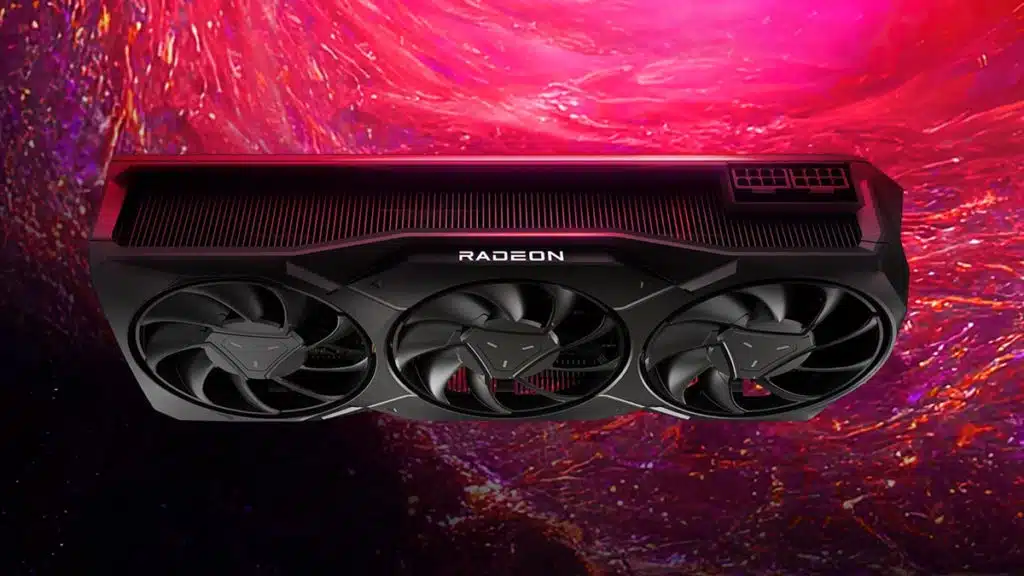The Radeon RX 8900 XTX, a new flagship graphics card that many enthusiasts had assumed would be leading AMD’s upcoming generation of RDNA 4 graphics cards, probably won’t be happening any time soon, if ever, according to new comments that Jack Huynh, AMD’s senior vice president and general manager of the Computing and Graphics Business Group, shared at IFA 2024 in Berlin, Germany. Huynh, who was pressed for information about AMD’s future plans amid whispers of the company having canceled its upper-tier Radeon RX 8000 Series GPUs, seemingly confirmed those rumors, admitting that it will no longer go after the flagship market and, instead, focus on lower-range products to grow its market share and appeal among developers in the consumer space.
Huynh said:
- “Do I want to go after 10% of the TAM [Total Addressable Market] or 80%? I’m an 80% kind of guy because I don’t want AMD to be the company that only people who can afford Porsches and Ferraris can buy. We want to build gaming systems for millions of users.”
- “…we tried that strategy [King of the Hill] — it hasn’t really grown. ATI has tried this King of the Hill strategy, and the market share has kind of been…the market share. I want to build the best products at the right system price point. So, think about price point-wise; we’ll have leadership.”
- “One day, we may [go after the flagship market]. But my priority right now is to build scale for AMD. Because without scale right now, I can’t get the developers. If I tell developers, ‘I’m just going for 10 percent of the market share,’ they just say, ‘Jack, I wish you well, but we have to go with Nvidia.’”
- “Of course, [for the data center we’re still planning for King of the Hill] because that’s performance-per-dollar. Even Microsoft said Chat GPT4 runs the fastest on MI300. Here’s the thing: In the server space, when we have absolute leadership, we gain share because it is very TCO-based [Total Cost of Ownership].”
- “In the client space, even when we have a better product, we may or may not gain share because there’s a go-to-market side, and a developer side; that’s the difference.”
A look at the Radeon RX 7000 Series, which includes several flagship models:
| Name | Compute Units | Ray Accelerators | AI Accelerators | Game Frequency | AMD Infinity Cache Technology | Max Memory Size |
|---|---|---|---|---|---|---|
| AMD Radeon RX 7900 XTX | 96 | 96 | 192 | 2300 MHz | 96 MB | 24 GB |
| AMD Radeon RX 7900 XT | 84 | 84 | 168 | 2000 MHz | 80 MB | 20 GB |
| AMD Radeon RX 7900 GRE | 80 | 80 | 160 | 1880 MHz | 64 MB | 16 GB |
| AMD Radeon RX 7800 XT | 60 | 60 | 120 | 2124 MHz | 64 MB | 16 GB |
| AMD Radeon RX 7700 XT | 54 | 54 | 108 | 2171 MHz | 48 MB | 12 GB |
| AMD Radeon RX 7600 XT | 32 | 32 | 64 | 2470 MHz | 32 MB | 16 GB |
| AMD Radeon RX 7600 | 32 | 32 | 64 | 2250 MHz | 32 MB | 8 GB |
From a report:
…Nvidia has a stranglehold on discrete gaming GPUs with performance leadership and 88% of the market share, while AMD holds just 12% of the market.
We won’t know the final verdict on AMD’s decisions for its next-gen RDNA 4 Radeon RX 8000 lineup until launch, which is expected to come later this year or early next year. However, given the typical long lead times for chip design and final production, it’s a safe bet that AMD’s decision is already set in stone.

